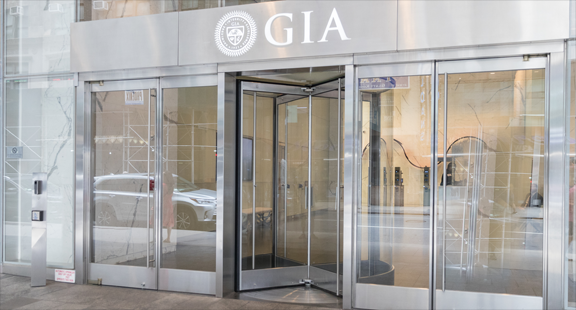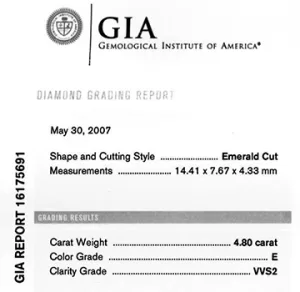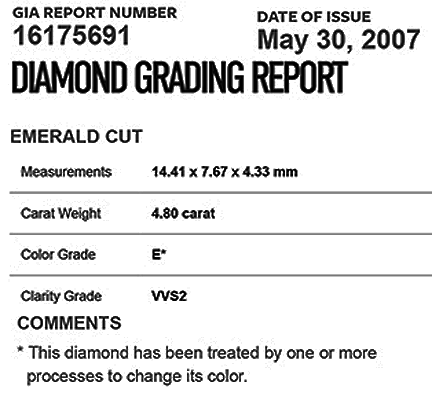Please sign in first
Not a member?

- Home
- Online Education Programs
- RG/RGA Legacy Entrance
- ISG Credentials
- Frequently Asked Questions
- Registry of Graduates
- Careers in Gemology
- Important Program Information
- Newsletters
- Susan Bailey v. Frantz Jewelers, et al.
- The Story of Blue Topaz
- The Story of Tibet Andesine
- The Story of Oregon Sunstone
- The Story of Created Moissanite
- Identifying Lab Created Diamonds
- Black Diamond or Created Moissanite?
- Ebay, the GIA, and Section 230
- Lessons From the Angry Janitor
- Exposing the Truth about Lab-Created Diamonds
- AGTA Hobbles Dealers and Buyers
- Appraisers -v- Gem Labs…a Legal Imbalance!
- Understanding the Classification of Diamonds
- Cremation Diamonds: Insuring and Litigating
- Let’s Talk About Gemology Credentials
- Hometown Jewelers and the Force Majeure Clause
- Following the Critical Angle of Diamond Grading
- When Breitling Brought the Airmen Home
- Let’s Open a Refractometer
- Measuring the Energy of Light
- Quick Reference Guide to Sunstone
- ISG Seeing the Invisible Light
- Contact Us
Appraisers -v- Gem Labs…a Legal Imbalance!
ISG Editorial: Appraisers -v- Gem Labs…a Legal Imbalance!

How can major gem labs avoid legal responsibility for errors while local appraisers cannot?
The following is a true story: In 2007, the GIA issued Diamond Grading Report #16175691, dated May 30, 2007, on a 4.80-carat E/VVS2 emerald cut diamond. The certificate did not mention any treatments involved with this diamond. You can click on the image on the left to see the full GIA Diamond Grading Report #16175691.
Earlier today, April 4, 2024, I went to the GIA Report Check website and entered the same GIA Diamond Grading Report #16175691. I got the report you see below.
Same GIA Diamond Grading Report #16175691.
Same Date: May 30, 2007.
The GIA report has been altered. You can click on the image below to see the full altered certificate.
The problem: the original GIA Diamond Grading Report has been altered to now reflect that this diamond has been treated to change its color. The altered certificate reports this diamond as HPHT treated. It’s the same GIA Diamond Grading Report, date, and information. One GIA Diamond Grading Report number, but two very different outcomes.
The GIA admits that the GIA issued both. You can confirm this by going to the GIA Report Check and entering 16175691. Below is the rest of this story.
The diamond in question was initially graded in 2007 and issued the grading report seen at the top. In 2013, the diamond was sold and sent to the GIA for a report update. While the original report did not show any HPHT treatment in 2007, in 2013, the GIA reported the diamond as HPHT treated, called for the original report to be returned, and then issued the updated certificate you see immediately above.
Of course, the problem is that the diamond was already sold as natural color based on the original 2007 GIA Diamond Grading Report.
When the buyer received the HPHT treatment report in 2013, they filed litigation against the seller for fraud.
Based on the original GIA Grading Report, the seller sold the diamond in good faith.
Based on the GIA error, the buyer and seller incurred over $100,000.00 in legal costs.
The GIA issued a letter acknowledging that the error was the fault of the GIA. Still, they refused to take legal responsibility for the error, refused to appear in court to answer for the error, and walked away from the entire litigation process without incurring any costs in time or money beyond the above-referenced letter and report replacement.
This was among the first of many errors I have encountered by major labs over the years while performing duties as an insurance investigator and expert witness.
This raises two serious questions about the difference in legal responsibility taken by the major gem labs compared to local jewelry appraisers:
Question #1: How could the GIA make such a heinous error and not be held legally and financially responsible for the losses incurred due to its admitted error?
Question #2: If a local jewelry appraiser made this same error on an insurance replacement appraisal, wouldn’t the appraiser be held legally responsible for the losses and legal costs?
The answers may amaze you.
The GIA Absolution from Errors
On the back of the GIA Diamond Grading Report was this statement behind which the GIA deflected any responsibility for the losses or legal costs for their admitted error. Direct from the GIA Diamond Grading Report fine print:
“GIA and its employees and agents shall not be liable for any loss, damage or expense resulting from any error in or omission from this report or from the issuance of or use of this report or any inscription, even if the loss, damage or expense was caused by or resulted from the negligence or other fault of GIA or any of its employees…”
In other words…….
If we make an error that causes damage….we are not responsible.
If we omit a fact that causes damage….we are not responsible.
If our employees are found to be negligent in doing their work…..we are not responsible.
This type of disclaimer is not limited to the GIA but is also found in some form with virtually every major lab world-wide. This is the state of our diamond grading lab industry. On this basis are virtually all of the diamonds and colored gemstones of the world markets being sold to consumers.
Therefore, the answer to Question #1 is that the major labs put this very fine print on the back of their grading reports, and if you use a GIA Diamond Grading Report, for instance, you agree to hold them harmless in the event they make the above costly error, even if their employee did it on purpose. Seriously, this is what this says.
Jewelry Appraisers Errors and Omissions
Question #2 is quite simple: If a local, hometown jewelry appraiser makes a material omission or error in a jewelry appraisal document that causes a client to suffer a loss, the appraiser can be held legally liable for the loss and ensuing litigation costs.
This, of course, brings us to a third and most important question:
Question #3: How can the GIA (and other major labs) with their multi-million dollar business of issuing diamond grading reports not be held to the same legal standard as the local jewelry appraiser?
A Very Disconcerting Answer
The sad truth is that the major labs operate without legal standards or oversight because no government or legal statute governs the multi-million dollar diamond grading report lab business. The GIA and all other labs operate in a legal void. While local, home-town jewelry appraisers are held to all sorts of legal standards by the IRS and others, the major labs operate outside of any type of oversight or standards. As a result, the GIA can make the kind of errors you see above that cause hundreds of thousands of dollars in litigation costs, and simply say: Too bad, and not our problem.
At the same time, if a local, hometown jewelry appraiser made this very same error, they would potentially be held liable for the loss and all litigation costs.
The Conclusion and Solution
The major lab reports offer no protection for buyers or sellers in today’s diamond or gemstone market. No major lab will make their graders available in court to defend their documents as a matter of operational procedure. As a Litigation Consultant, I can attest to this based on actual case history. Virtually all have disclaimers absolving themselves of any fault for errors they produce and avoiding all legal costs their errors may create.
The staff graders of these major labs are no better or worse than properly trained local hometown jewelry appraisers. Perhaps the available grading tools are more expensive, but the ability to grade a diamond from a lab grader to a properly trained local appraiser offers little difference in abilities.
Since the local hometown jewelry appraiser is held to a higher standard and must maintain a higher level of training, the industry should rely on the work of the local hometown jewelry appraiser for diamond grading. While issues such as created vs. natural diamonds continue to be an issue, it is still a fact that no major lab can offer a 100% accurate separation of the two anyway.
While this is not a panacea for the problem, the fact that local appraisers are legally liable for the accuracy of their work and for appearing in court to defend their work, it follows that the local, home-town jewelry appraiser is a more trustworthy source for grading and appraisal than a far-off lab with no liability for errors or omissions.
It is time for professional hometown jewelers to get the training and expertise to do their own diamond grading and learn how to present the proper grading to their customers.
After all, that is how the industry operated for decades. It worked then; it will work now, and the result will be far better for consumers and the industry.
And, put some of that $300 million tax-free revenue stream going to pay the million-dollar salaries of the GIA executive staff…back in your pockets.
The above is my opinion….I welcome you to send in yours.
Robert James FGA, GG
President, International School of Gemology
President, Global Claims Associates
Texas Department of Insurance Property and Casualty Adjuster #1300433

